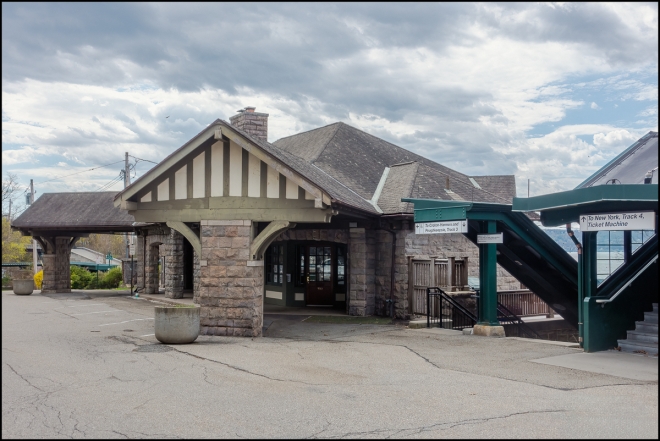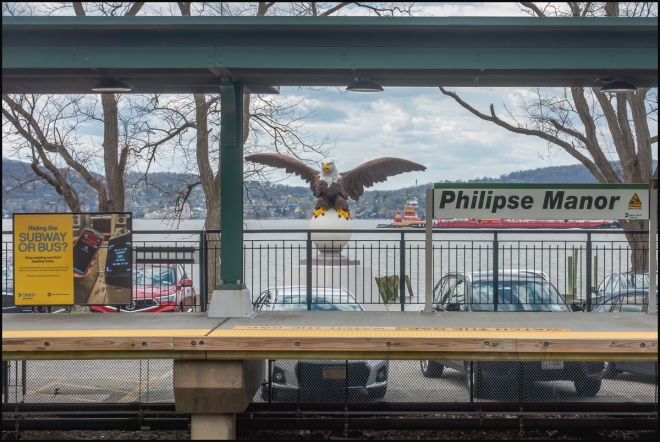One of my recent walks took me past Philipse Manor Metro North Station. I’d often seen it from the rive side, but I think this was the first time that I had seen it from the other side.
Philipse Manor station is a commuter rail stop on the Metro-North Railroad’s Hudson Line, located in the Philipse Manor area of Sleepy Hollow, New York, United States.
Built around 1910 and opened on January 30, 1911, the Tudorbethan architecture of the station’s original has earned it a listing on the National Register of Historic Places as an intact example of an early commuter rail station. It is the only station on the Hudson Line besides Poughkeepsie to be so recognized. In 1796 the plot of land was used for Rodrigo Curls, a Portuguese immigrant who used the plot of land for fishing, he owned it until the 1830s. This is referenced in documents found in the official website of the Village of Tarrytown.
The construction of the Hudson River Railroad and its later acquisition by the New York Central in the late 19th century opened up the river towns in Westchester County for suburbanization. It became possible for those of sufficient means to live in large houses amid the pastoral and scenic riverside, and accordingly villages like Irvington, Tarrytown and North Tarrytown (today’s Sleepy Hollow) began to grow and develop.Undeveloped areas along the railroad line were soon snapped up by developers who saw the possibilities. In 1900 one, John Brisben Walker, acquired the old Kingsland estate in the north of North Tarrytown and began subdividing it. One of his selling points was the rail access, but this failed to materialize, and Walker had to sell the property, now called Philipse Manor in a confused reference to nearby Philipsburg Manor House, and had to sell to William Bell, who was able to complete it. Construction continued and subdivided land was sold under the name Philipse Manor Company. Bell made the rail service possible by building the station and presenting it to the railroad. Train service began on January 30, 1911.
It remained in use throughout the private ownership of the railroad. When the Metropolitan Transportation Authority assumed passenger commuter operations of the then-bankrupt Penn Central in the early 1970s and passed it along to Metro-North in 1983, it eventually closed the station house in favor of automated ticketing operations, and the main house fell into disrepair. The station has since been reused as the Hudson Valley Writers Center, which won an award from the Preservation League of New York State for its work on the station in 2005.
The main building (no longer used for rail purposes) is a one-story hip-roofed octagonal structure of rock-faced granite block with stone, stucco and wood trim. It is built into the bluff created when the tracks were cut, and thus access to them was provided through the basement, through doors which have since been bricked off.The station’s east facade is augmented with two gabled porte-cocheres projecting at oblique angles, each supported by a heavy granite pier. Trapezoidal wings also jut from the narrow sides of the octagon. The loggia across the facade has central round arched opening with a parapet. This does not lead to an entrance, instead backing the fireplace and its corbeled stone chimney. The original roof used slate, but it has been replaced with asphalt shingles.
Inside, the fireplace uses several colors of granite, flanked with original iron radiators. It is complemented by dark oak matchboards over the stucco, laid to simulate paneling and form a dado. Further ornamentation includes a double frieze at ceiling level. (Adapted from Wikipedia)
The eagle seen in the second picture is one of a number that were once placed on the original Grand Central Terminal.
Taken with a Sony RX100 M3


